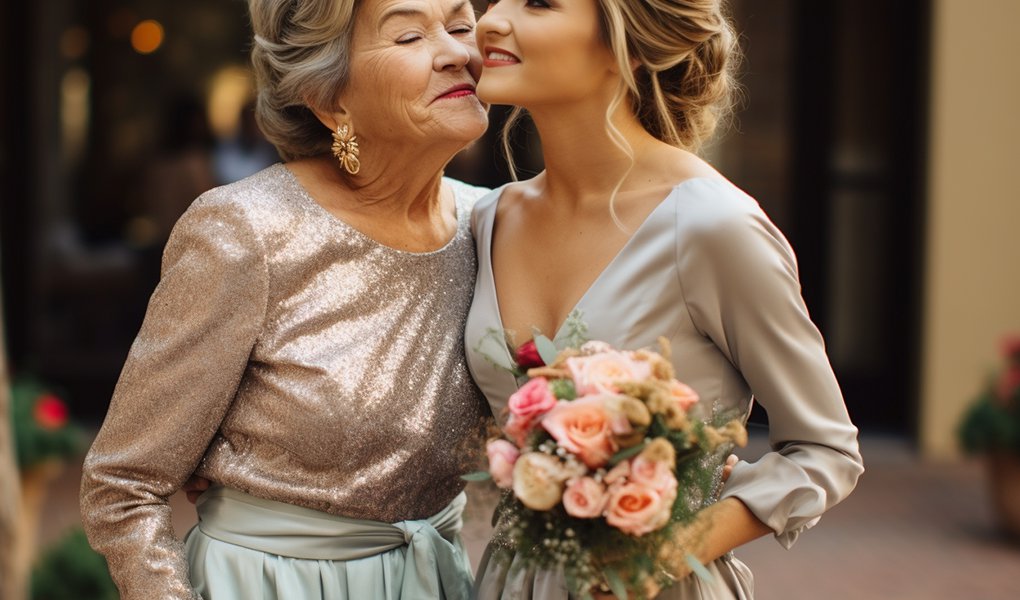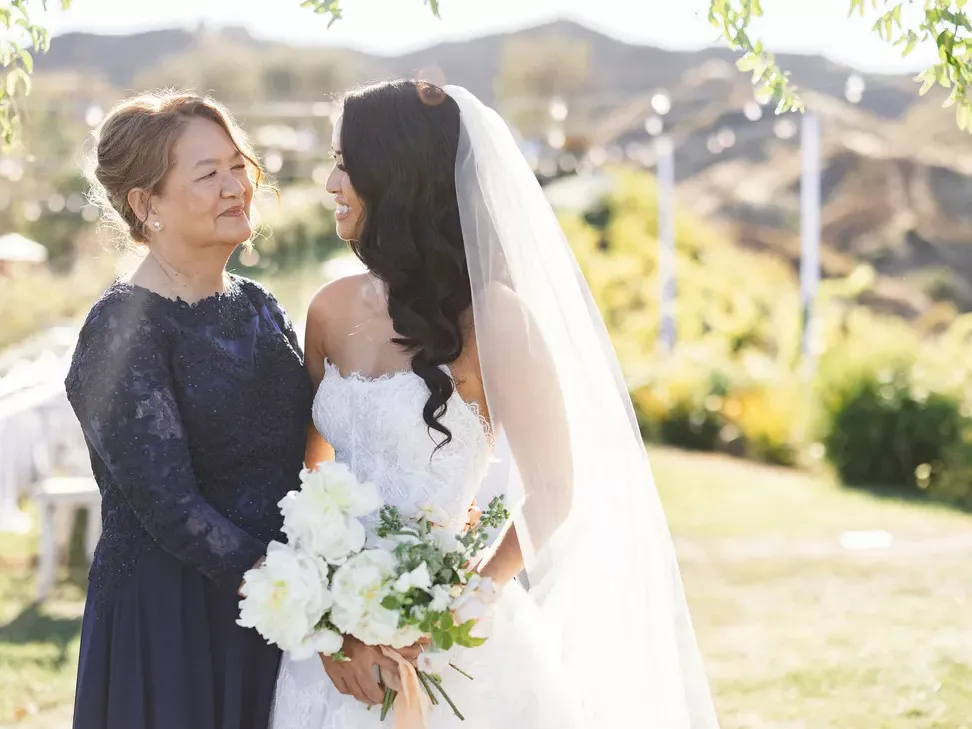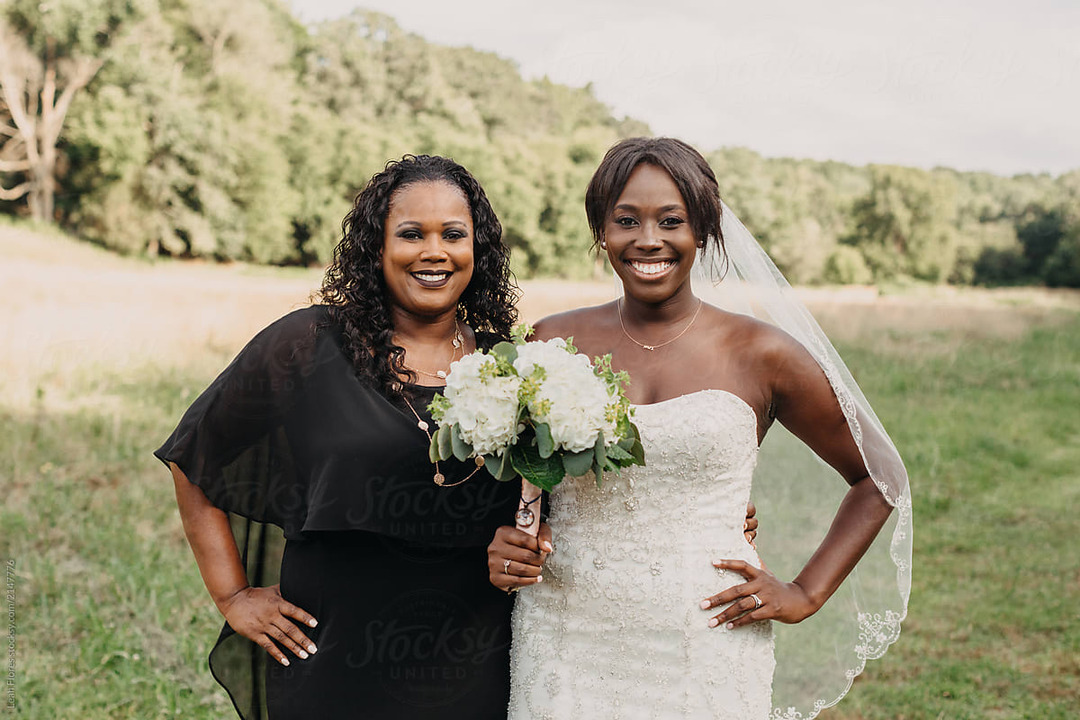I. Introduction

A. The significance of the mother of the bride’s dress
The mother of the bride plays a significant role in a wedding, and her choice of dress is an important aspect of the occasion. Not only does the dress contribute to the overall aesthetic, but it also reflects the mother’s style and enhances her presence on this special day.
B. Understanding the factors to consider when choosing the dress color
Choosing the right color for the mother of the bride’s dress involves careful consideration of various factors. These factors include the wedding theme and color scheme, the bride’s preferences, the mother’s skin tone, and the time of day or season of the wedding.
C. Overview of the article on finding the perfect color for the mother of the bride’s dress
This article aims to guide the mother of the bride in selecting the perfect color for her dress. By exploring factors such as wedding coordination, personal style, skin tone, and seasonal considerations, readers will gain insight into making an informed decision.
II. Factors to Consider When Choosing the Dress Color
A. Coordinating with the wedding theme and color scheme
- Complementing the overall aesthetics of the wedding
Choosing a dress color that complements the wedding theme creates a cohesive and visually pleasing atmosphere. Harmonizing with the chosen color scheme ensures that the mother of the bride’s dress blends smoothly with the overall wedding decor.
- Avoiding clashing with the chosen color palette
While it’s important to coordinate with the wedding theme, it’s equally crucial to avoid colors that clash with the chosen color palette. Pay attention to the dominant colors, as well as any accent colors, to select a dress shade that enhances rather than clashes with the overall look.
B. Considering the bride’s preferences and style
- Ensuring harmony with the bride’s dress and vision
Consider the bride’s dress and style when choosing the mother of the bride’s dress color. Aim for harmony by selecting a color that complements or contrasts with the bride’s dress, depending on the desired aesthetic. Communicate with the bride to understand her vision and any specific preferences she may have.
- Reflecting the mother of the bride’s personal style and comfort
The mother of the bride’s dress should reflect her personal style and ensure her comfort throughout the day. While it’s important to consider the wedding atmosphere, prioritize choosing a color that the mother feels confident and comfortable wearing.
C. Skin tone and complexion
- Analyzing undertones and choosing colors that complement the skin tone
Consider the mother of the bride’s skin undertone (cool, warm, or neutral) to select colors that enhance her complexion. Cool undertones tend to favor jewel tones and cool pastels, while warmer undertones can be complemented by earthy tones and warm pastels. Experiment with different shades to find the most flattering options.
- Experimenting with different hues to find the most flattering options
It’s essential to experiment with various colors to determine which ones are most flattering for the mother of the bride. Test different hues against the skin to see how they interact and identify the shades that bring out the best in her features.
III. Time of Day and Seasonal Considerations
A. Dressing for a daytime wedding

- Opting for lighter and softer colors
For a daytime wedding, lighter and softer colors create a fresh and airy look. Pastel shades, blush tones, or gentle neutrals can be excellent choices for creating an elegant and light-filled appearance.
- Emphasizing pastels or gentle neutrals for a fresh and elegant look
Pastels, such as baby blue, blush pink, or mint green, can exude a soft and feminine vibe. Alternatively, neutral tones like taupe, champagne, or ivory can provide a sophisticated and timeless look.
B. Dressing for an evening wedding
- Choosing richer and deeper colors for a sophisticated and formal appearance
Evening weddings call for more dramatic and rich colors that highlight elegance and formality. Darker shades like navy, burgundy, or emerald green can create a luxurious and sophisticated look.
- Incorporating metallic accents or jewel-toned colors for added glamour
Metallic accents, such as gold or silver, can add a touch of glamour and sophistication to an evening dress. Jewel tones like sapphire, ruby, or amethyst can also create a bold and eye-catching impact.
C. Embracing seasonal palettes
- Integrating seasonal hues such as warm earth tones for fall or vibrant shades for summer
Embracing seasonal palettes adds a touch of harmony to the overall wedding atmosphere. For fall, consider warm earth tones like burnt orange, deep plum, or olive green. In summer, embrace vibrant hues such as coral, turquoise, or sunshine yellow.
- Complementing seasonal florals or natural surroundings
Take inspiration from seasonal florals or natural surroundings when selecting the dress color. By complementing the seasonal elements, the mother of the bride’s attire can harmoniously blend with the surroundings and create a cohesive look.
IV. Etiquette and Cultural Considerations

A. Assimilating with cultural traditions
- Understanding cultural expectations and customary colors
When choosing the dress color as the mother of the bride, it is essential to consider cultural traditions and expectations. Different cultures may have specific color symbolism or customary colors associated with weddings. Research and understand the cultural significance of colors to ensure respect and adherence to tradition.
- Considering the bride and groom’s cultural background
Take into account the cultural background of the bride and groom. If they come from different cultural backgrounds, it is important to find a balance and incorporate aspects from both cultures when choosing the dress color. Consulting with the couple can provide valuable insights and guidance.
B. Adhering to wedding etiquette guidelines
- Following any specific dress code requirements
Some weddings may have specific dress codes or themes. Take note of any guidelines provided by the couple regarding the attire. Whether it’s a black-tie event or a casual beach wedding, understanding and adhering to the dress code ensures that the mother of the bride’s dress is appropriate and in line with the overall ambiance of the wedding.
- Avoiding white, which is traditionally reserved for the bride
It is customary to avoid wearing white as the mother of the bride, as white is traditionally reserved for the bride. Opt for other colors that complement the wedding theme, suit the mother of the bride’s style and preferences, and maintain proper wedding etiquette.
V. Accessories and Complementary Elements
A. Pairing the dress color with appropriate accessories

- Selecting accessories that enhance the chosen dress color
Accessories can enhance the overall look and allow for personalization of the mother of the bride’s attire. Choose accessories that complement and accentuate the chosen dress color. Consider accessories such as statement necklaces, earrings, bracelets, or a clutch that harmonize with the color palette.
- Balancing the overall look with suitable jewelry, shoes, and handbags
Ensure a well-balanced and coordinated look by selecting jewelry, shoes, and handbags that harmonize with the dress color. Opt for metallic tones or neutral shades that complement the chosen color and contribute to an elegant and sophisticated ensemble.
B. Coordinating with the mother of the groom’s dress
- Ensuring harmony and coordination between both mothers’ attire
Coordinate with the mother of the groom to ensure that both mothers’ dresses complement each other and align with the overall wedding theme. Consider discussing color choices and styles to create a cohesive and harmonious visual appearance.
- Communicating and collaborating with the mother of the groom
Open communication and collaboration with the mother of the groom can help avoid any unintentional clashes in color choices and overall attire. Discussing preferences, sharing ideas, and finding common ground can result in a unified and visually pleasing appearance between both mothers.
VI. Conclusion
When choosing the dress color as the mother of the bride, it is essential to consider etiquette and cultural considerations. Understanding cultural traditions, adhering to wedding etiquette guidelines, and avoiding wearing white are paramount. Additionally, pairing the dress color with appropriate accessories and coordinating with the mother of the groom’s dress contribute to a well-coordinated and elegant ensemble. By navigating these factors, the mother of the bride can confidently select the perfect dress color to enhance her role on the wedding day and honor the couple’s cultural background and traditions.

